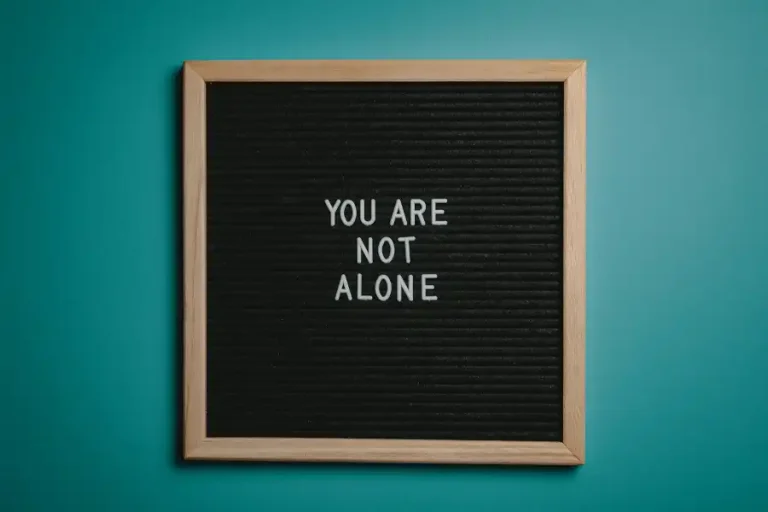Men die by suicide nearly four times more often than women, according to global mental health statistics. Despite this alarming disparity, many men remain reluctant to seek help, often due to stigma, societal expectations, or lack of awareness. This silence has devastating consequences—and it’s why Men’s Mental Health Month matters.
Awareness campaigns play a vital role in changing public perception and encouraging men to prioritize their mental well-being. Men’s Mental Health Month is a dedicated time to break down barriers, amplify support systems, and spotlight the specific challenges men face when dealing with mental health issues.
This article clarifies when Men’s Mental Health Month is, how it started, and why it’s often overlooked. More importantly, it emphasizes the need for continued advocacy and awareness—not just in a single month, but year-round.
When is Men’s Mental Health Month? Clearing the Confusion
When is Men’s Mental Health Month?
What month is Men’s Mental Health Month?
The answer is clear: June is Men’s Mental Health Month.
Every year, June Men’s Mental Health Month is observed to raise awareness about the mental health challenges men face, reduce stigma, and promote open conversations around depression, anxiety, suicide, and other psychological concerns. It is officially recognized as Men’s Mental Health Awareness Month, focusing exclusively on mental health issues affecting men and boys.
So, is June Men’s Mental Health Month? Yes. Despite some confusion online and in public discussions, June is the correct and recognized month.
Is Men’s Mental Health Month June or November?
This confusion often arises due to the popularity of Movember—a global movement held every November. While Men’s Mental Health Month November is sometimes mentioned, it’s important to clarify that November is not the official month for men’s mental health awareness. Instead, Movember focuses on men’s physical health—particularly prostate cancer, testicular cancer, and suicide prevention.
Though mental health is part of Movember’s broader health advocacy, Men’s Mental Health Awareness Month in June is the dedicated time to focus solely on men’s mental well-being.
To summarize:
- ✅ June is Men’s Mental Health Month.
- ✅ Men’s Mental Health Awareness Month is recognized in June.
- 🚫 November is not Men’s Mental Health Month—it’s associated with Movember, which includes broader health topics.
History and Establishment: The Origins of June Observance
When was Men’s Mental Health Month established?
When did Men’s Mental Health Month start?
The formal observance of Men’s Mental Health Month began in the United States in June 1994, initiated by the Men’s Health Network, a nonprofit organization focused on improving the health and well-being of men and boys. It was created in response to the growing awareness of how societal expectations and gender norms prevent many men from seeking help for mental health issues.
When did June become Men’s Mental Health Month?
While it was first established in 1994, June became more widely recognized as Men’s Mental Health Month during the 2010s, as mental health advocacy grew and discussions around male suicide, emotional suppression, and the lack of support services gained visibility.
The early objectives were clear: reduce stigma, encourage early intervention, and promote the idea that seeking help is a strength—not a weakness. Over the years, campaigns and collaborations with healthcare providers, advocacy groups, and community organizations helped solidify June as the central month for promoting Men’s Mental Health Awareness.
It’s important to note that while the United States formally observes June as Men’s Mental Health Month, other countries may host similar initiatives at different times. For example, Movember—originating in Australia—focuses on men’s health more broadly in November, sometimes leading to confusion between the two observances.
In short:
- Men’s Mental Health Month was established in 1994.
- June became the recognized month for men’s mental health awareness.
- The initiative has gained global traction, even as timelines differ across regions.
The Significance of Men’s Mental Health Month (June)
Men’s Mental Health Awareness Month, observed each June, is more than just a symbolic observance—it’s a call to action.
The primary goals of Men’s Mental Health Month are:
- Destigmatization: Challenging outdated beliefs that emotional vulnerability is a weakness.
- Encouraging help-seeking: Empowering men to seek professional support and talk openly about their mental struggles.
- Promoting resources: Raising awareness about therapy, crisis lines, support groups, and online mental health tools.
- Fostering open conversations: Encouraging workplaces, communities, and families to talk about mental wellness.
Men face unique mental health challenges. Social pressures to remain stoic and “tough” often discourage men from acknowledging emotional pain. As a result, conditions like depression and anxiety are frequently underdiagnosed in men. Tragically, men also experience higher rates of suicide, particularly among middle-aged and older groups.
By creating visibility and normalizing open dialogue, Men’s Mental Health Awareness Month helps break down these harmful norms. Throughout June, campaigns, personal stories, and advocacy events make it easier for men to speak up—and for others to listen.
The impact of sharing real experiences—whether online or in person—can be life-changing. These stories not only inspire others to seek help but also build empathy across gender lines, encouraging a culture where mental health is treated with the same importance as physical health.
In essence, June is a vital time for education, advocacy, and connection—laying the foundation for year-round mental health support.
Why is Men’s Mental Health Month Often Overlooked?
Why is Men’s Mental Health Month ignored? Despite the serious impact of mental health issues on men, June’s observance often lacks the visibility and urgency seen with other awareness campaigns.
Several key factors contribute to this oversight:
1. Persistent Stigma
Society has long equated masculinity with emotional control, strength, and stoicism. Vulnerability is often viewed—wrongly—as weakness in men. This stigma discourages not only help-seeking behavior but also open support and advocacy, making Men’s Mental Health Awareness Month harder to amplify.
2. Lack of Media Coverage
While initiatives like Movember in November gain global media traction with viral campaigns and corporate sponsorships, Men’s Mental Health Month in June receives far less attention. The disparity in coverage weakens public awareness of the month’s existence and purpose.
3. Misplaced Focus and Confusion
The question “Is Men’s Mental Health Month June or November?” continues to create confusion. Movember—though important—focuses on broader men’s health topics like prostate cancer, testicular cancer, and suicide prevention. This overlap dilutes the mental health-specific message intended for June, making it easy to overlook.
4. Limited Funding and Promotion
Compared to other high-profile campaigns (such as Breast Cancer Awareness Month in October), Men’s Mental Health Month receives significantly less funding and institutional backing. This impacts outreach, event organization, and overall visibility.
5. Internalized Stigma
Even among men themselves, internal resistance plays a role. Some downplay their struggles or avoid engaging in mental health discussions altogether, further reducing public engagement during the month.
6. Systemic Barriers in Healthcare
Many healthcare systems are not fully equipped to identify how mental distress presents differently in men. Symptoms may manifest as irritability, substance abuse, or risk-taking behavior—often misdiagnosed or ignored—making it harder to create effective, male-targeted interventions.
These combined factors explain why Men’s Mental Health Month is often ignored, despite its urgent and growing relevance. Addressing these barriers is essential to ensure June becomes a widely recognized and supported time for advocacy, education, and change.
Moving Forward: Making Men’s Mental Health Month Matter
Raising awareness during Men’s Mental Health Awareness Month is only the beginning. To make real change, June must become a springboard for sustained, year-round action.
How Individuals Can Help
Everyone has a role to play in making Men’s Mental Health Month more impactful:
- Talk openly about mental health with friends, family, and colleagues.
- Share credible resources on social media or in community spaces.
- Challenge harmful stereotypes that discourage men from expressing emotion or seeking help.
- Support organizations working to improve access to mental health care for men.
Community and Institutional Responsibility
- Workplaces can host seminars, provide mental health days, or offer employee assistance programs with male-focused support.
- Schools and community groups can organize events or workshops during June.
- Healthcare providers should ensure their services are inclusive, trauma-informed, and sensitive to how men may present symptoms differently.
Keep the Conversation Going All Year
While June is Men’s Mental Health Month, awareness shouldn’t end when the month does. Consistent advocacy helps reduce stigma and creates lasting change. Use June to jumpstart dialogue and planning, then carry that momentum forward.
Key Resources for Men’s Mental Health
If you or someone you know needs support, these resources can help:
- National Suicide Prevention Lifeline (U.S.): 988 or 1-800-273-TALK
- Men’s Health Network: www.menshealthnetwork.org
- HeadsUpGuys (for men’s mental health): www.headsupguys.org
- NAMI (National Alliance on Mental Illness): www.nami.org
- Local support groups and mental health services through clinics or online platforms
Beyond the Month
Men’s Mental Health Month is firmly rooted in June, recognized nationally as Men’s Mental Health Awareness Month. Despite this, ongoing confusion with November’s Movember campaign, persistent stigma, and lack of widespread media attention often cause this important observance to be overlooked.
But men’s mental health deserves sustained attention—not just in June.
The conversation must continue beyond a single month. Recognizing the challenges men face, creating safe spaces for honest dialogue, and expanding access to mental health support are critical steps toward long-term change. When individuals, communities, and institutions work together, we move closer to a future where men no longer suffer in silence.
The message is clear: help is available, strength is found in vulnerability, and change is possible. Men’s Mental Health Awareness Month can be the catalyst—but it’s collective action that gives it power.







